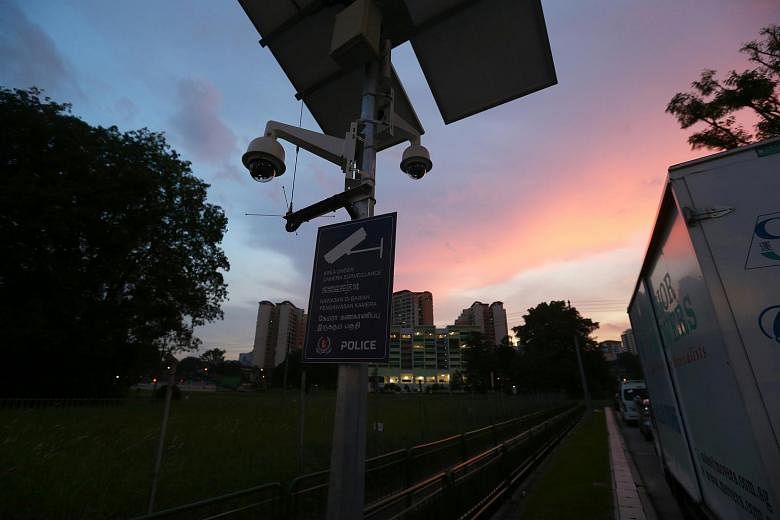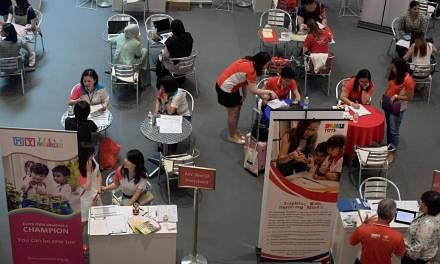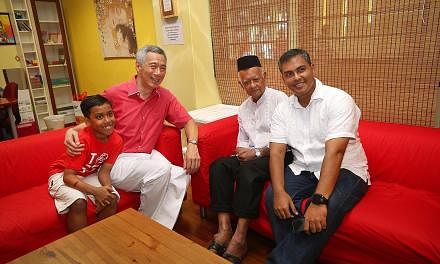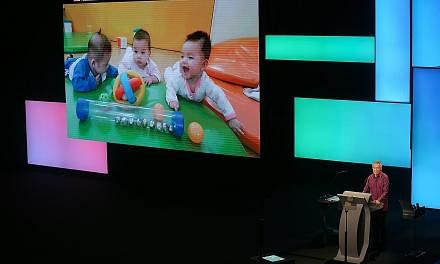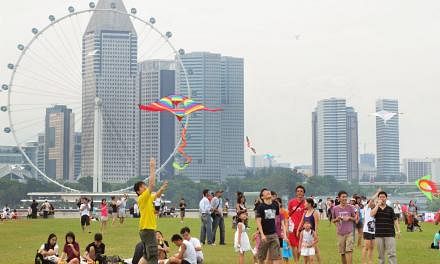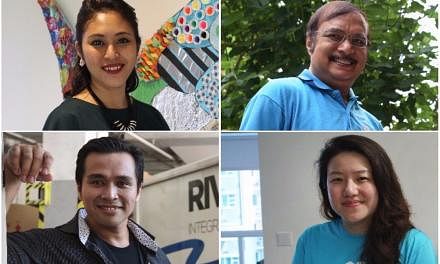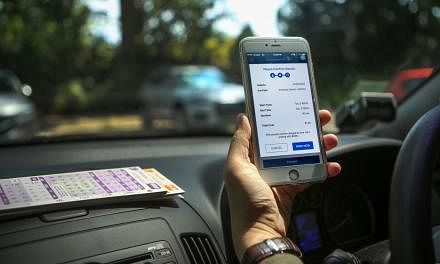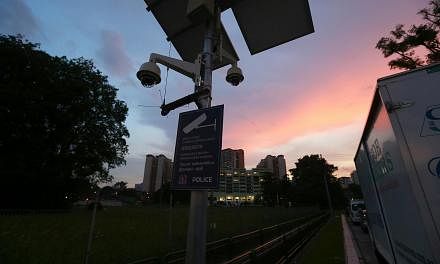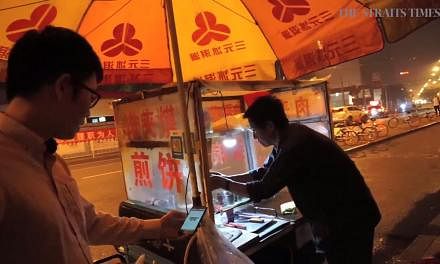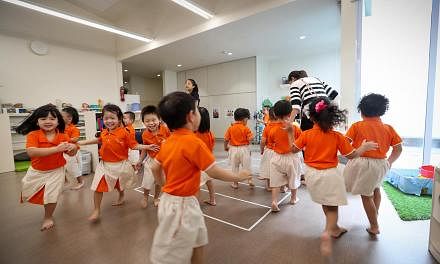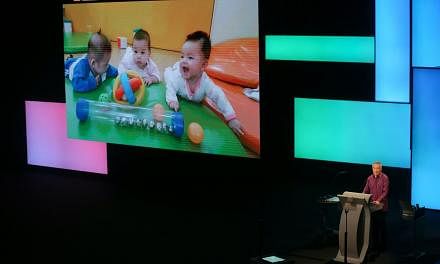SINGAPORE - Plans are underway to turn every lamp post into a smart lamp post that can carry and transmit information gathered from surveillance cameras and sensors around the country.
The network of interconnected lamp posts could form the spine of the Smart Nation Sensor Platform (SNSP), which aims to use artificial intelligence (AI) technologies to analyse, for instance, video footage collected by government agencies.
These could be used to detect anomalies and predict situations such as potentially unruly crowds and traffic congestion.
"We are making every lamp post a smart lamp post to mount different types of sensors," Prime Minister Lee Hsien Loong said in his National Day Rally speech on Sunday (Aug 20) when he spoke about making Singapore a Smart Nation.
The AI-based video analytics system is slated for a trial in Orchard Road and selected housing estates from October (2017). During the year-long trial, GovTech and other agencies will monitor noise, water and sewage levels for better estate management, and install smart water meters in homes to better track the use of utilities.
GovTech and the Land Transport Authority (LTA) will test the lamp posts with trials in selected areas over the next 18 months.
The private sector will also be roped in. GovTech will call a tender at the end of the year for products that will allow LTA's 95,000 street lamps to be used for transmitting data such as temperature, humidity, footfall or vehicular traffic.
PM Lee said on Sunday that the SNSP initiative was born after the Little India riots in December 2013 - the first public disturbance of its kind in 40 years.
He said: "We were caught a little flat-footed. There were too few CCTV cameras monitoring Little India. We had to rely on footage posted by the public on social media."
About 300 foreign workers were involved in the riot at the junction of Race Course Road and Hampshire Road. It lasted for about two hours.
Since then, more CCTV cameras have been installed in public places. However, the different surveillance systems have not been brought together, PM Lee said.
For instance, LTA has its own cameras to monitor traffic conditions and deter illegal parking. The police, on the other hand, have their own cameras at the void decks of Housing Board flats and lift landings as part of efforts to deal with loan sharks. National water agency PUB has sensors to detect water levels in drains.
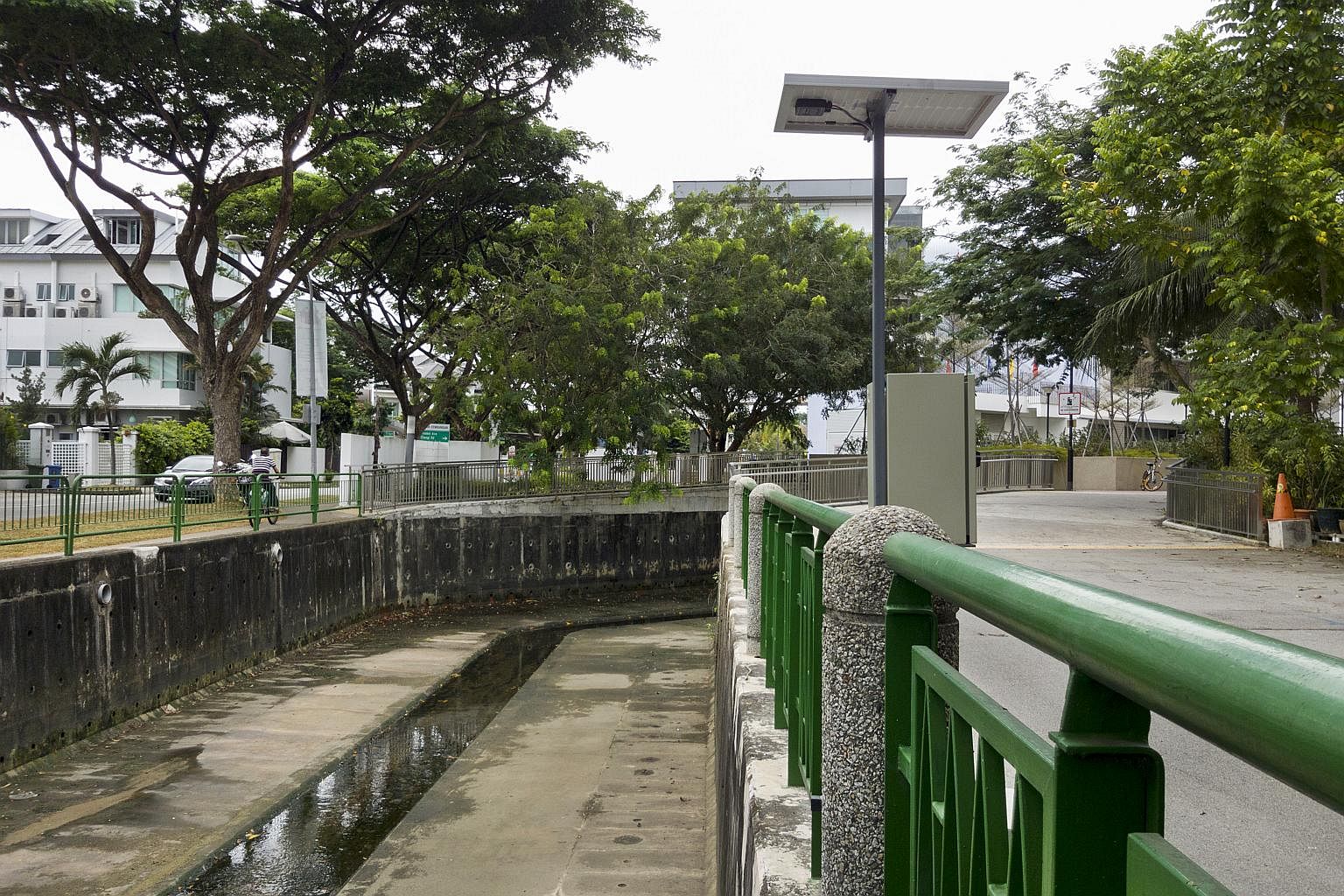
In this respect, Singapore is lagging behind other cities.
Said Mr Lee: "Many cities already have comprehensive CCTV and sensor networks. And they also can integrate the inputs from all the sources, analyse and make sense of the information, and respond promptly if there is an incident or emergency."
Combining these various inputs into an integrated data source is key, he added.
"If one day, we have an incident like the Boston bombings, our Home Team can assess the situation quickly and respond promptly, or even pre-empt it from happening."
In April 2013, double bombings near the finishing line of the Boston Marathon killed three people and wounded 264.
Boston police identified the two bombers within three days, after pulling together and analysing a vast amount of data from CCTV cameras, social media and footage contributed by the public.
